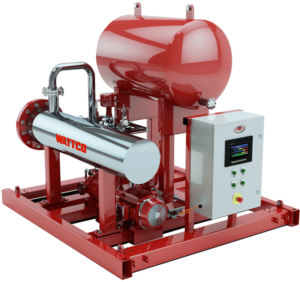Electric heating – Challenges Facing the Industry
Last updated on April 26th, 2023 at 08:06 pm
Professor Alina Adriana Minea, Technical University “Gheorghe Asachi” from Iasi
Bd. D. Mangeron no.63, Iasi, 700050, Romania
E-mail: aminea@tuiasi.ro
Due to the numerous advantages of electric heating, it is used extensively in industry despite the higher price of energy if compared with combustion. Of course, there is always a balance in using combustion or electric heating. Their use depends on the specific processes and economic analysis, and, in any case, the process balance is the driving force in choosing the right method for heating.
 One of the main advantages of using electricity is the precision of temperature control and its distribution inside the heated chamber, along with the simplicity of the equipment. It is worth mentioning that combustion heating requires additional equipment (ex., heat exchangers, channels for gases collection). Also, processes involving electric heating are usually faster, cleaner, noiseless, and do not release a large quantity of by-product heat to the environment.
One of the main advantages of using electricity is the precision of temperature control and its distribution inside the heated chamber, along with the simplicity of the equipment. It is worth mentioning that combustion heating requires additional equipment (ex., heat exchangers, channels for gases collection). Also, processes involving electric heating are usually faster, cleaner, noiseless, and do not release a large quantity of by-product heat to the environment.
Overall, electric heating is a greener process in comparison with combustion heaters.
Electric heating methods include:
- Resistance heating
- Electric arc heating
- Induction heating
- Dielectric heating
These methods are classified into two main categories: direct and indirect heating. In each case, the heat transfer involves a combination of radiation, convection, and conduction—where the first two are fluid specific and appear simultaneously. The third one (i.e., conduction) is solid dedicated.
The specifics of every process differ in some basics. For example, the electricity is applied directly to the work parts in arc welding. While in induction heating, the heat is created within the work part.
The heating type selection has to be made based on some significant considerations. One must see the process as a whole and consider the industry-specific requirements and the number of equipment needed in a particular process. Usually, the measures to be taken for an efficient electric heated furnace are, for example:
- Correct heat distribution
- Operating at the desired temperature
- Reducing heat losses from furnace openings
- Maintaining the correct amount of furnace draught
- Optimum capacity utilization
- Minimum refractory losses
- Use of Ceramic Coatings
Every step outlined before is essential and correct measures need to be implemented. Usually with the help of outstanding calculation methods involving analytical, numerical, and experimental techniques.
Mitigating Greenhouse Gas Emissions
Nevertheless, the most important issue remains the increasing greenhouse gas (GHG) emissions over the last years. For example, the United States emitted 6.7 GtCO2eq in 2018, distributed between transportation (28%), electricity (27%), industry (22%), commercial and residential (12%), and agriculture (10%) [1]. Utmost GHG emissions in most sectors (for example, transportation, electricity, and residential) are from the combustion of fossil fuels. Decreasing the carbon footprint of most industrial and non-industrial processes can be addressed by substituting combustion with renewable and low-carbon processes, a major objective in the last decades.
Pisciotta et al. [2] described an interesting overview of this problem in a recent article published in Progress in Energy and Combustion Science. Their major conclusion was that additional expansion is required to validate the emerging furnace technologies at a commercial scale, specifically hydrogen switching for natural gas in rotary and shaft kilns and electric kiln technology at high material throughput.
References:
- U.S. EPA. Inventory of U.S. Greenhouse Gas Emissions and Sinks 1990-2018. 2020.
2. Maxwell Pisciotta, Hélène Pilorgé, John Feldmann, Rory Jacobson, Justine Davids, Shelvey Swett, Zachary Sasso, Jennifer Wilcox, Current state of industrial heating and opportunities for decarbonization, Progress in Energy and Combustion Science, 2022, 100982, https://doi.org/10.1016/j.pecs.2021.100982.
Biography
Alina Adriana Minea is a full professor at Technical University Gheorghe Asachi from Iasi, Romania and Director of Coordination Council of Doctoral School in Materials Engineering and has published over 140 articles and authored or co-authored 17 books, most of them in the field of heat transfer. Her research interests include heat transfer in industrial equipment, based on modifying heat chamber geometry and improving energy consumption, as well as nanofluids as heat transfer enhancement technique.
She currently serves as a member of the regional editorial board of journal Thermal Sciences, as Associate Editor for Journal of Thermal Science (Springer) and International Journal of Thermophysics (Springer), as Editor for Journal of thermal science and engineering progress (Elsevier), as Editor-in-Chief for IREHEAT journal. In 2013 and 2016, she received the prize for Best Reviewer from Applied Energy, Elsevier. In 2016 and 2019 she received the Best Researcher from Technical University Gh. Asachi from Iasi.
Her major current projects are ‘Nanouptake COST action” and “NanoRound.” Her current work is based on numerical and experimental studies in developing new heat transfer fluids.

